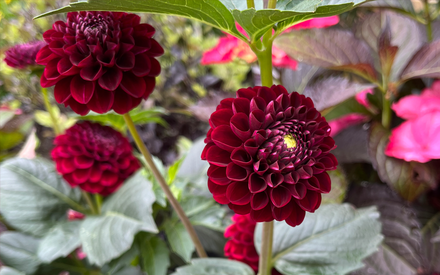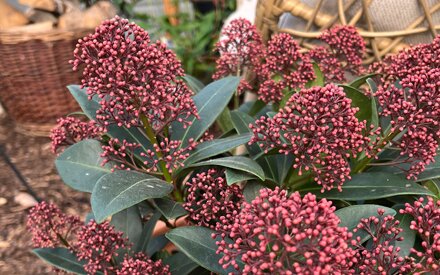
Choosing your seed potatoes
-
First, early potatoes mature in 60-110 days. Planted towards the end of March, they are ready for lifting from late June or early July.
-
Second early potatoes mature in 110-120 days. Planted mid-to-late April, they will be ready for harvesting from early to mid-August.
-
Maincrop potatoes mature in 125-140 days and if planted in late April can be harvested by mid-August, and this can continue through to October.
All 3 can be planted from mid-March onwards as a rough guide dependent on weather. You can find our range of Seed Potatoes here
Chitting
-
When you get your seed potatoes home, set the tubers out in egg boxes or the bottom of a seed tray.
-
The potato seed should be positioned so the sprouts are uppermost and the 'stalk' end (where they were severed from the parent plant) is at the bottom. Keep them somewhere in good light that is cool and frost-free. This technique, called chitting, will encourage the potatoes to produce sturdy shots ready for planting out later.
Growing Potatoes in Containers
Potatoes grow quite happily in large pots or potato grow-sacks placed in any sunny spot.
-
Any size container can be used from 30cm (1ft) wide and deep up to a full-sized dustbin. The only requirement is that they have good drainage holes in the bottom. We use specially designed potato growing bags. From experience, we know these will last several years.
-
Fill the bottom of the container with 10cm (4in) of multipurpose compost breaking up any lumps.
-
Place the seed potatoes on the compost with the side that has the most sprouted eyes uppermost. For a standard potato grow bag, use 3 seed potatoes. Cover with another 10cm (4in) of multipurpose compost.
-
Water the container well and then mark it up with the variety of potato being grown. Place the container in a light and airy position out of any chance of frost.
-
After a few weeks, shoots will appear from the compost. When they reach about 15cm (6in) above the soil level, add about 10cm (4in) more multipurpose compost so that only 5cm (2in) of the shoot is above soil level.
-
Repeat the process until the shoots reach above the top of the container.
-
The main care required is watering and feeding. Be careful not to over-water your potatoes. The compost should always be moist but never absolutely soaked.
-
Feed every couple of weeks with a concentrated tomato feed, diluted as per the instructions on the packet.
Growing Potatoes in open ground
-
Mid-March is the ideal time to plant the sprouted potatoes in the open ground.
-
Plant First and Second earlies' about 30cm / 12in apart from each other, in rows which are 60cm / 2ft apart.
-
Plant maincrop potatoes about 35cm / 15in apart, in rows which are 75cm / 2ft 6in apart.
-
Where you are planting more than one row, the rows should (ideally) run from North to South to allow each plant its full share of sun.
-
Dig a trench about 10cm / 4in deep, placing the potatoes in it with the sprouts pointing upwards.
-
Hand fill the trench over the potatoes trying to avoid damaging any sprouts. Scatter bonemeal or similar long-lasting fertiliser over the topsoil and rake it in.
-
Frost damage is the first concern in the early stages. If shoots emerge above the soil level and frost threatens, draw a little soil from the bed edges over them.
-
After the potatoes plants have grown to about 20cm / 8in pull up the soil in between the rows around the plants leaving a few centimetres still showing. Repeat the exercise in two to three weeks time.
-
During the growing season, ensure that weeds are removed and apply some long-lasting fertiliser again around mid-August.
-
As the potato plant grows, do not remove or 'stop' the foliage, it is supplying food to the tubers. However, remove any flower heads or buds which appear because these will produce potato seeds which will divert energy from the potato tubers.
Harvesting
Potatoes are ready for harvest when the foliage first starts to die and turn yellow. Early (new) potatoes can be lifted earlier (no earlier than June ), Harvest them about a week after the potato plant flowers first appear.
Maincrop potatoes will be ready for harvest in mid-Autumn (start of September at the earliest). For all potatoes, dig them up from the side of the ridge to avoid damaging the potatoes. If you don't need all the potatoes from a plant at one time or if you want a few early in the season, simply burrow around the roots with your hands and remove the potatoes you need. The remaining potatoes will continue to grow.
Remove any soil clinging to the potatoes and leave them on the soil for a few hours to dry out - if they are stored damp, they will rot. Leaving them on the soil surface in the sun will harden the skin slightly, doubling the storage time - this is especially important for maincrop potatoes. Store the potatoes in boxes or sacks, checking them every few days, removing all but those in good condition. Damaged or blemished potatoes should be eaten immediately.




